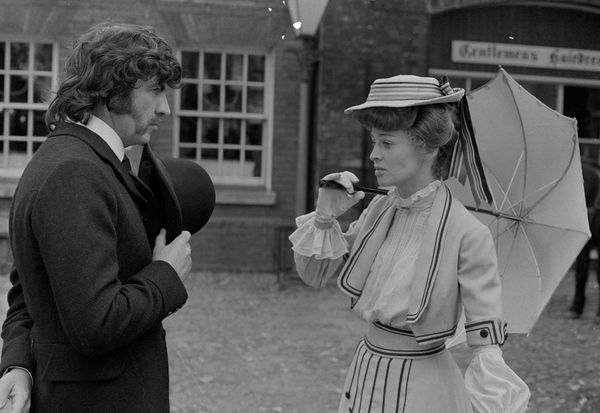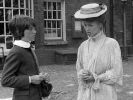Eye For Film >> Movies >> The Go-Between (1971) Film Review

Levels and layers are at play in Joseph Losey's Palme d'Or winning period drama (beating, among others, Luchino Visconti's Death In Venice) - from class to the differences between the way adults and children understand the world - although, as so often in British costume drama, it is class that is king. Adapted for the screen from the LP Hartley novel by Harold Pinter, it marked Losey's third collaboration with the playwright after The Servant and Accident. The story is mostly observed from the perspective of 12-year-old Leo (Dominic Guard) - who we meet as an adult, when he is played by Michael Redgrave - who has gone to spend summer with his far richer friend Marcus (Richard Gibson).
Marcus lives with his family in what they would doubtless call an ancestral pile, in Norfolk, a space with sweeping staircases and grand spaces that Losey and his cinematographer Gerry Fisher make great use of during the course of the film (despite the black and white images that accompany this review, the film also throbs with the colours and heat of summer). We don't need to be told that Leo is of a different class, we can tell it from his body language and, as we soon learn, the fact that he has not brought with him a summer suit.

It is here that Leo meets Marcus' sister Marian (Julie Christie) first glimpsed rather than heard as she swings in a hammock and, of course, being on the cusp of adolescence, he has soon developed a crush on her. Soon the discomfort of cooking in his clothes will be nothing compared to the awkward situation he finds himself in as Marian asks him to become a messenger boy between herself and local farmer Ted Burgess (Alan Bates, with a slightly hit-or-miss accent). Leo doesn't quite understand what's going on but he is aware of how clandestine the operation is and, though he likes Ted and adores Marian, he also begins to feel conflicted about his assignments, not least because he also becomes friendly with Marian's fiance Hugh Trimingham (Edward Fox).
Both Losey and Pinter are less interested in the romance itself than in the way its illicit nature exposes the class divide. Pinter also accentuates the way that children are more likely to take statements in a literal manner, so that when realisation dawns on Leo, it is all the more crushing. Ted is described as "wild" at one point but "not dangerous to you or me", but, in fact, the farmer's freedom from the upper-class constraints does indeed threaten and infiltrate their bubble - perhaps illustrated best at a cricket match where he blasts the ball about before being caught out, not by one of the upper crust, but by Leo.
Not everything works. There's a subplot about Leo cursing classmates, which though adding a bit of portentousness never quite takes shape, and though Pinter was obviously hoping to show how the past can echo into the present, Redgrave's element of the film is all rather beside the point. But Pinter and Losey capture the seething unspoken emotions that lurk beneath the green and pleasant surface with aplomb.
Reviewed on: 17 Sep 2019

















